
Works
(1955-1962) - Acqui Terme (Alessandria) - Villa Ottolenghi - Garden with swimming pool
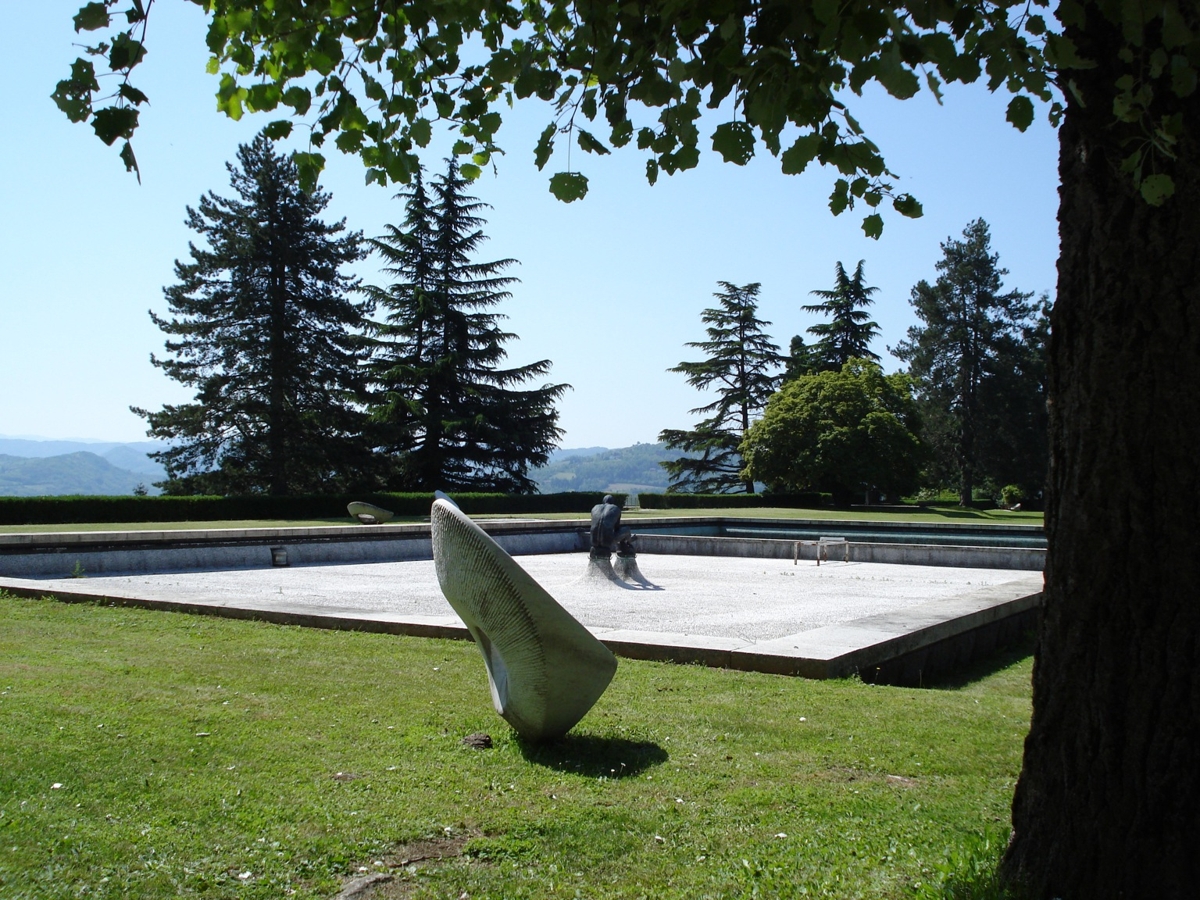
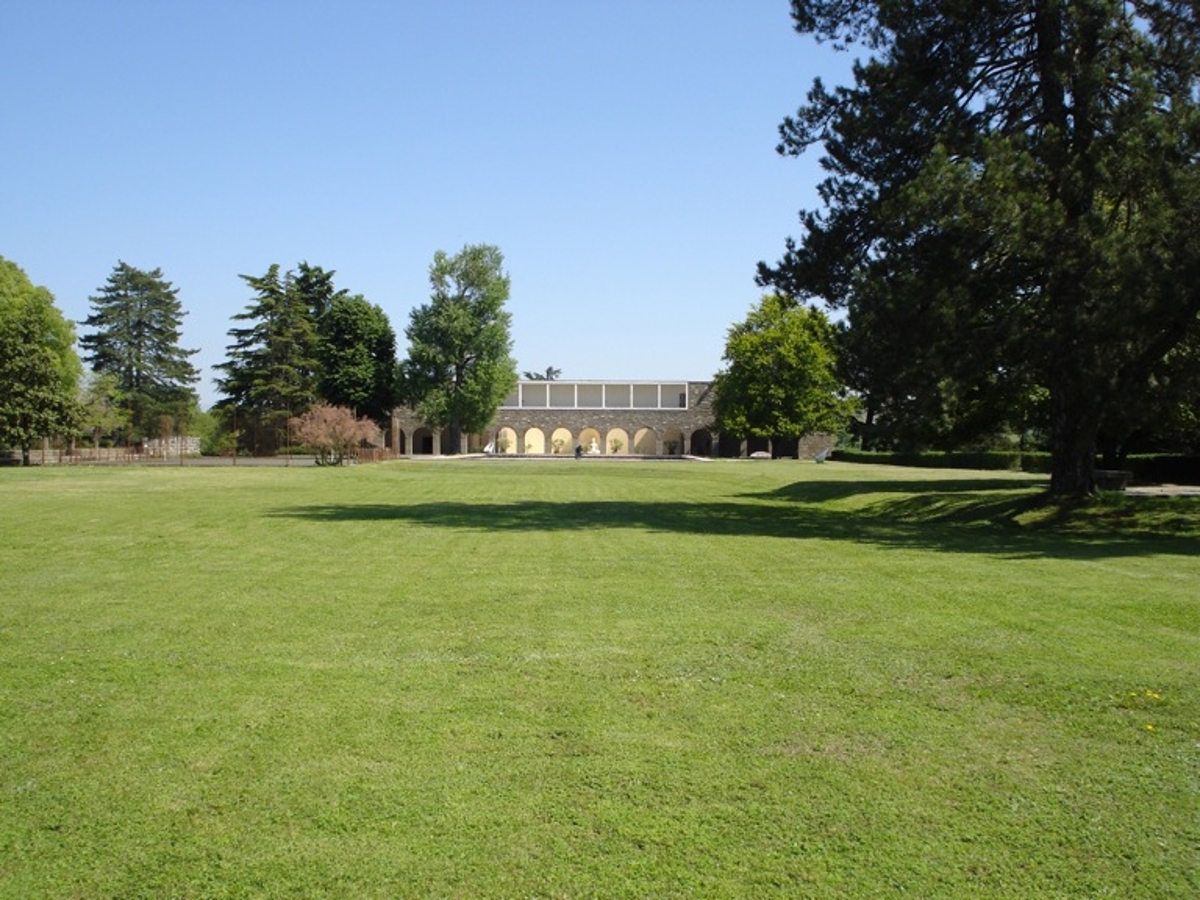
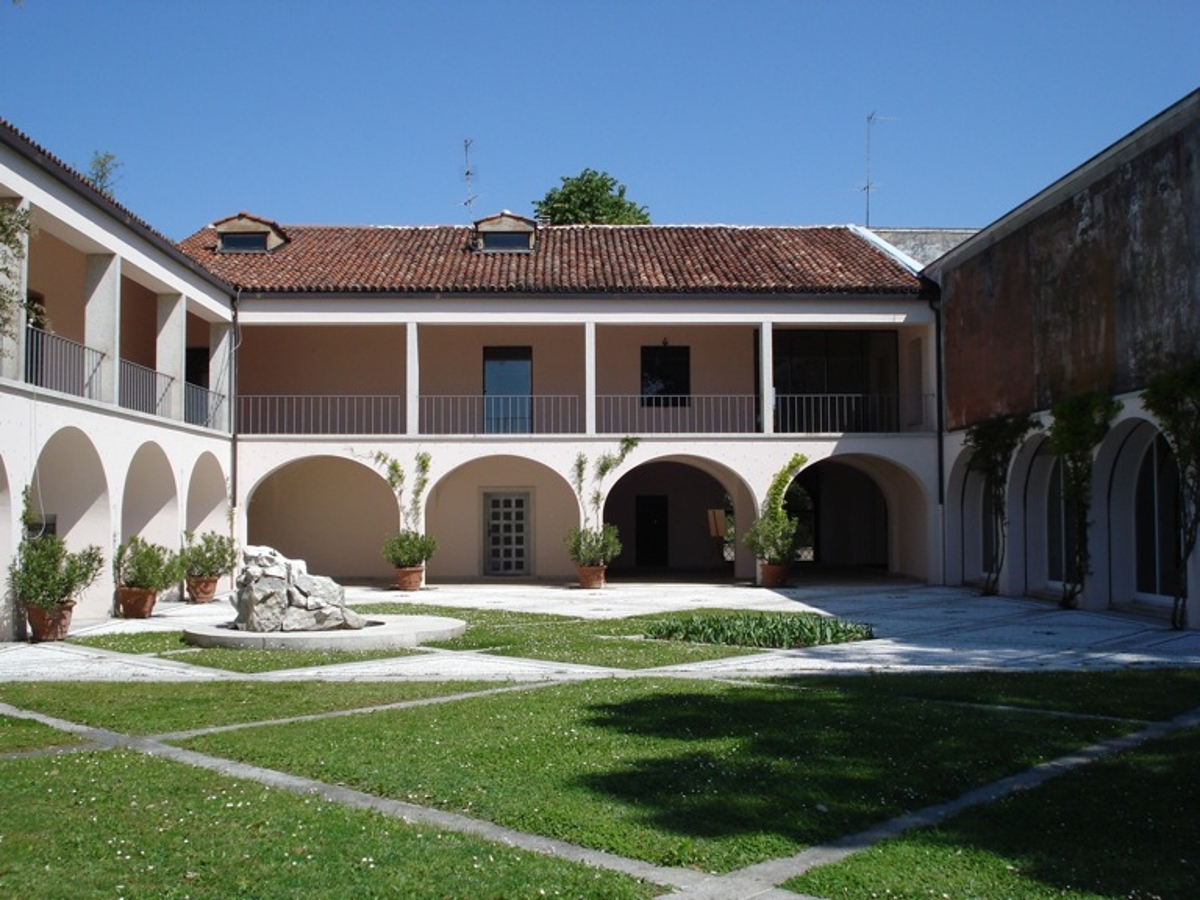
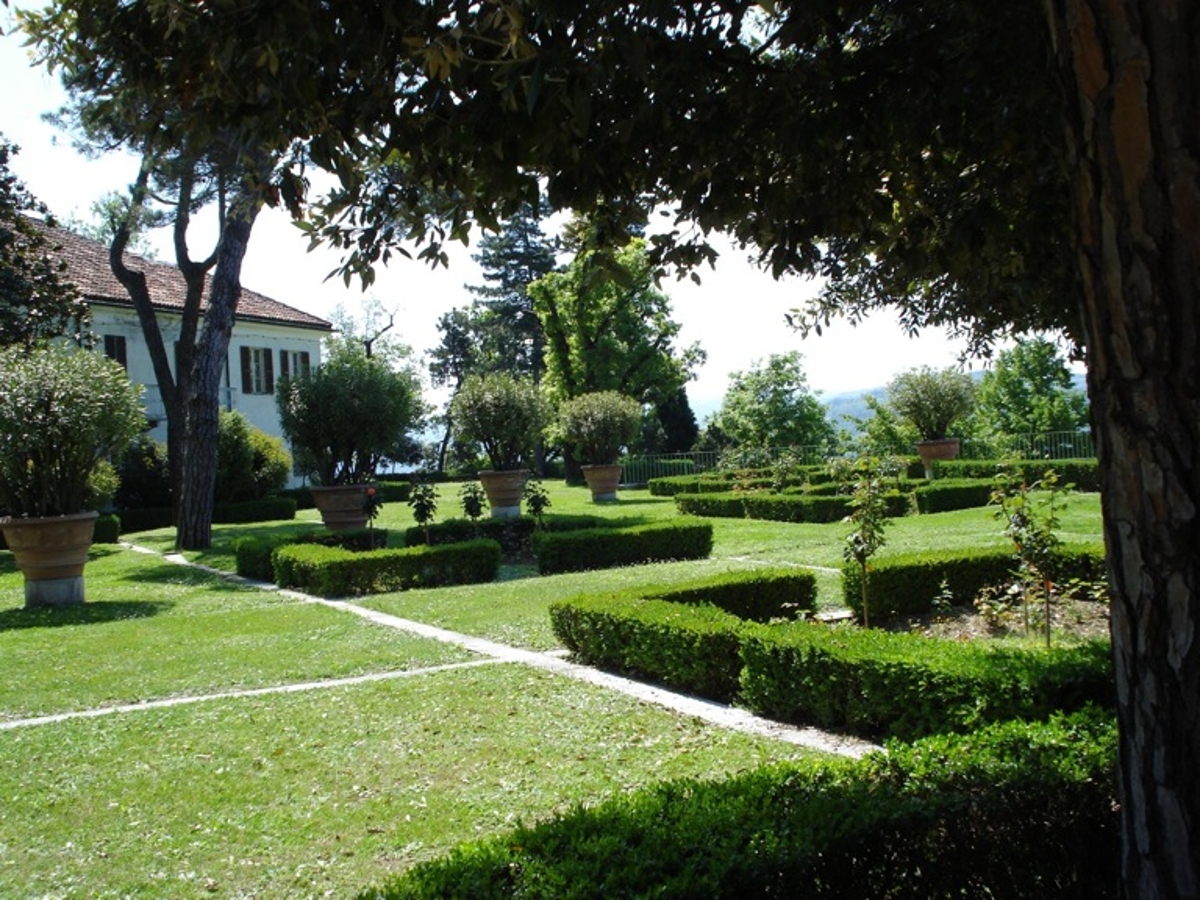
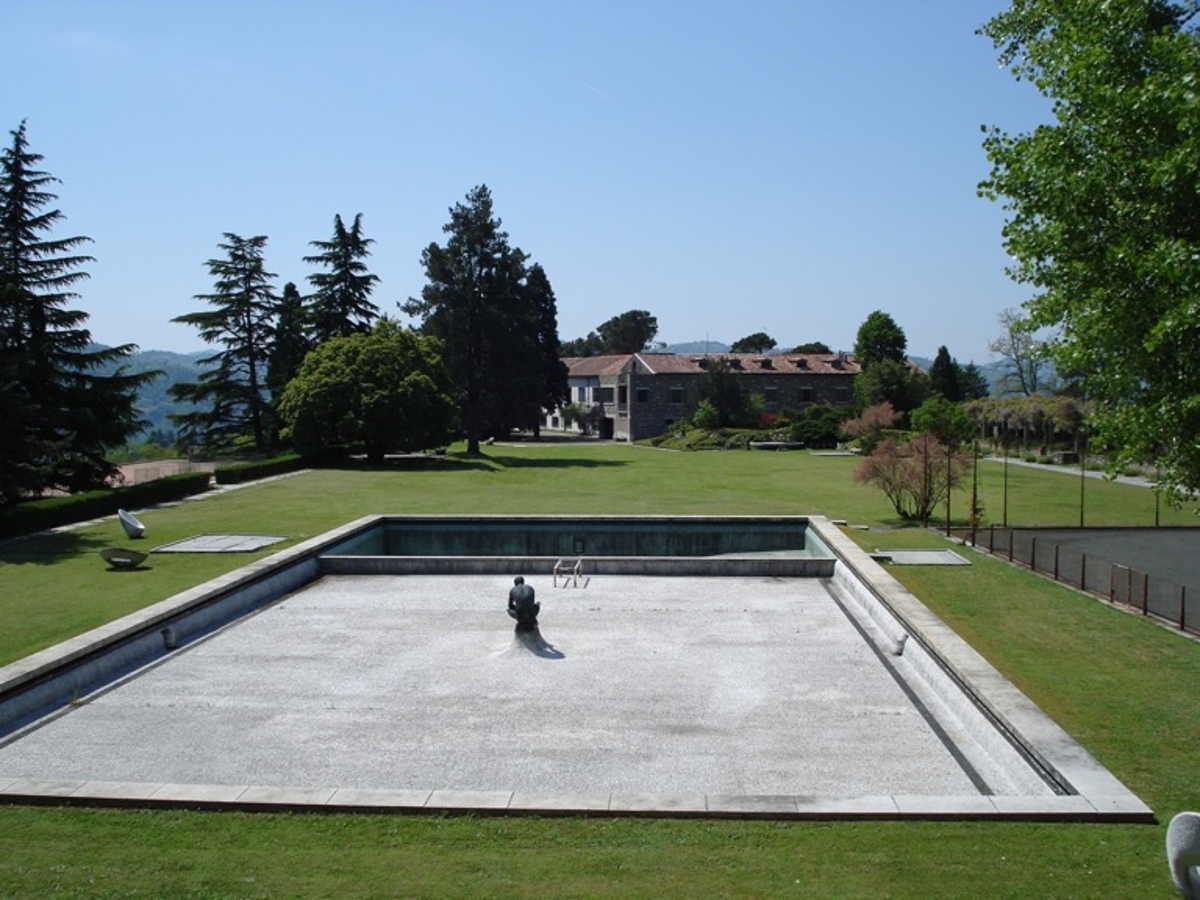
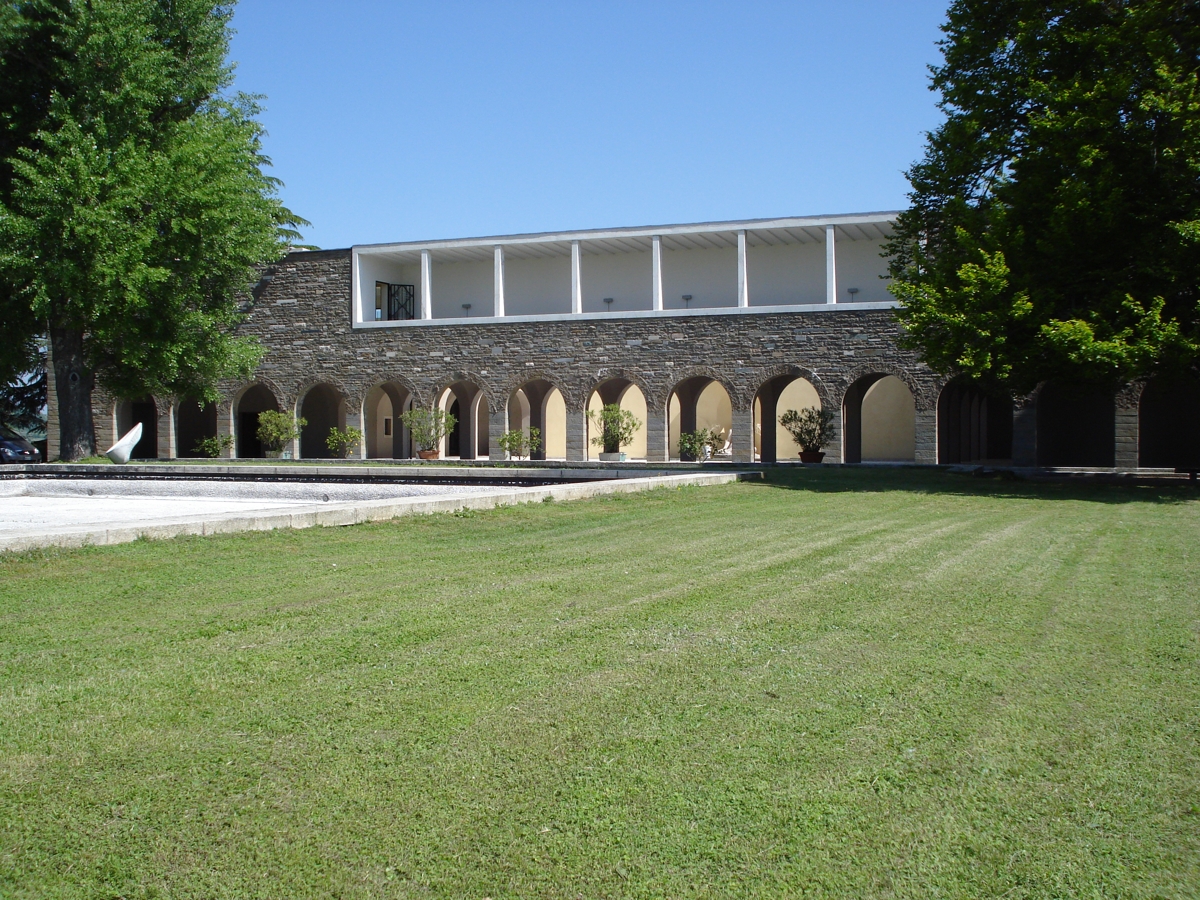
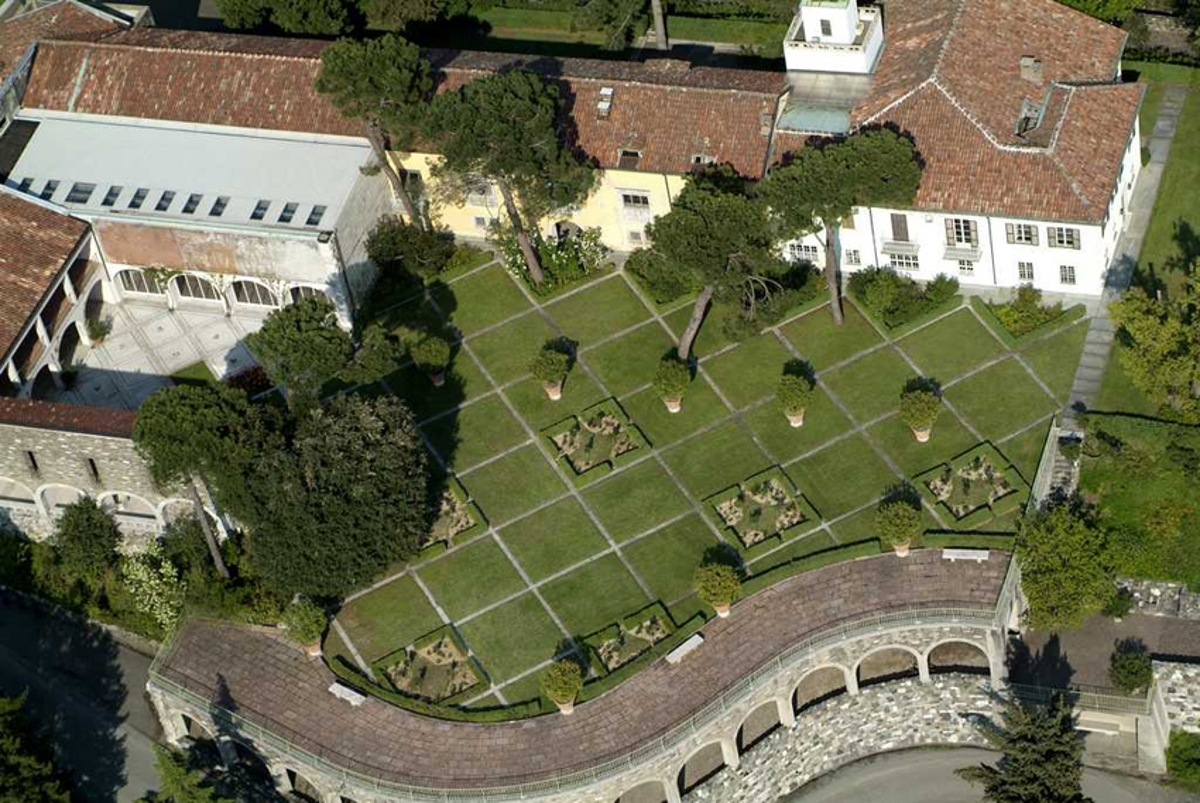
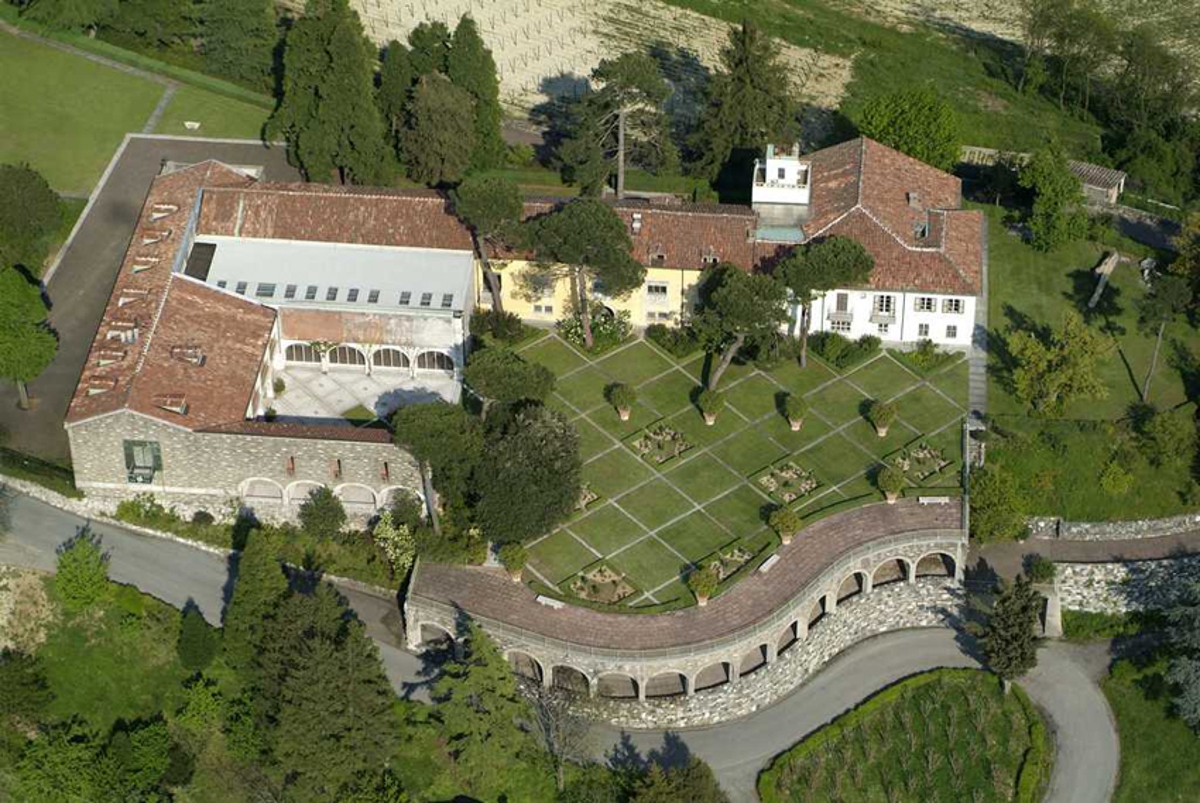
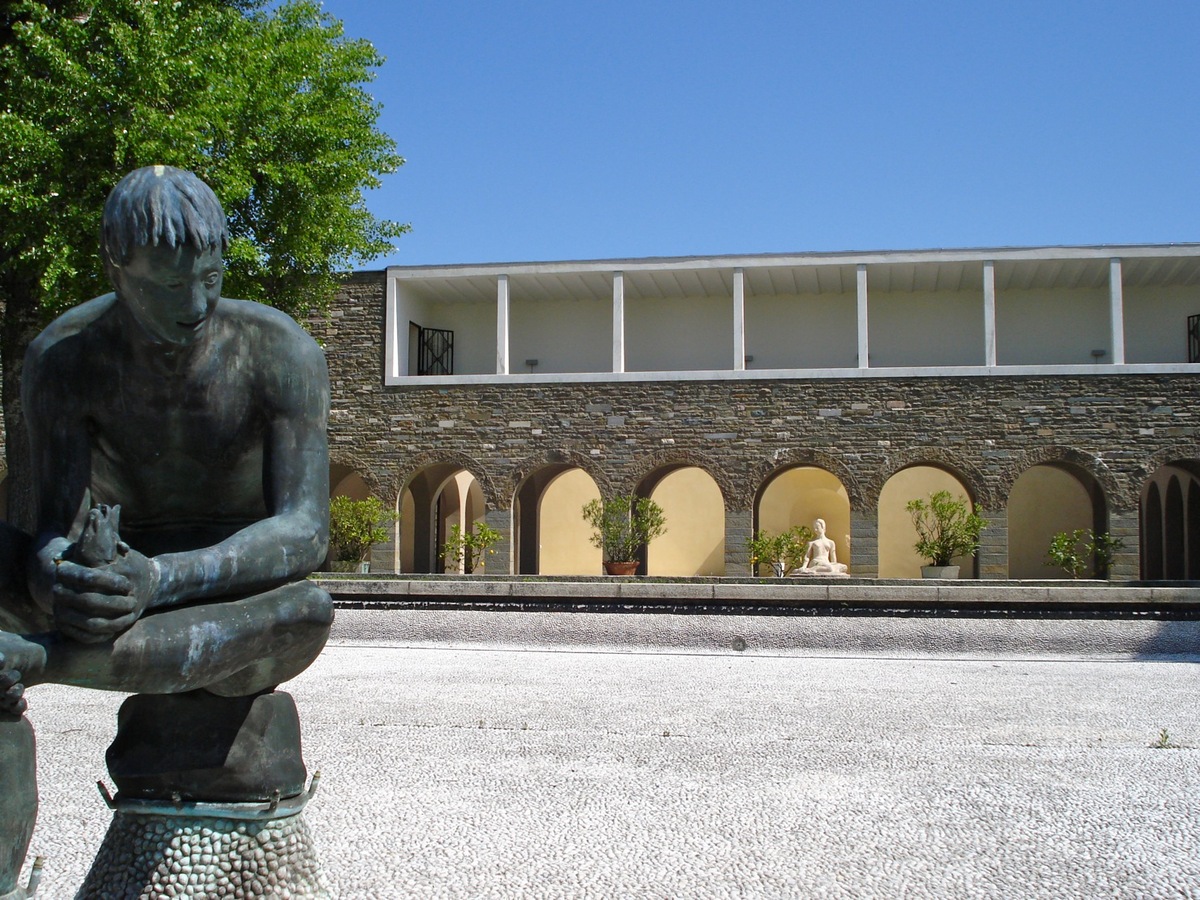
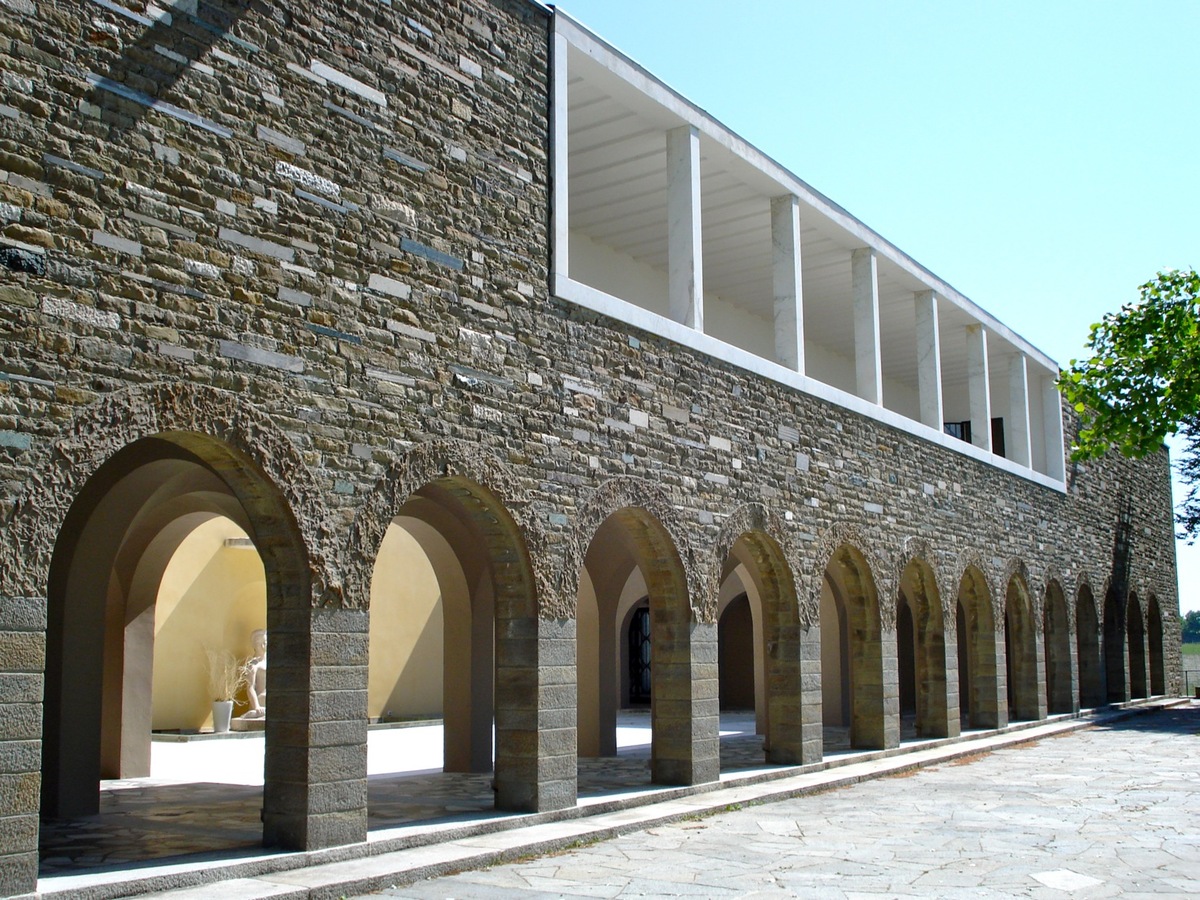
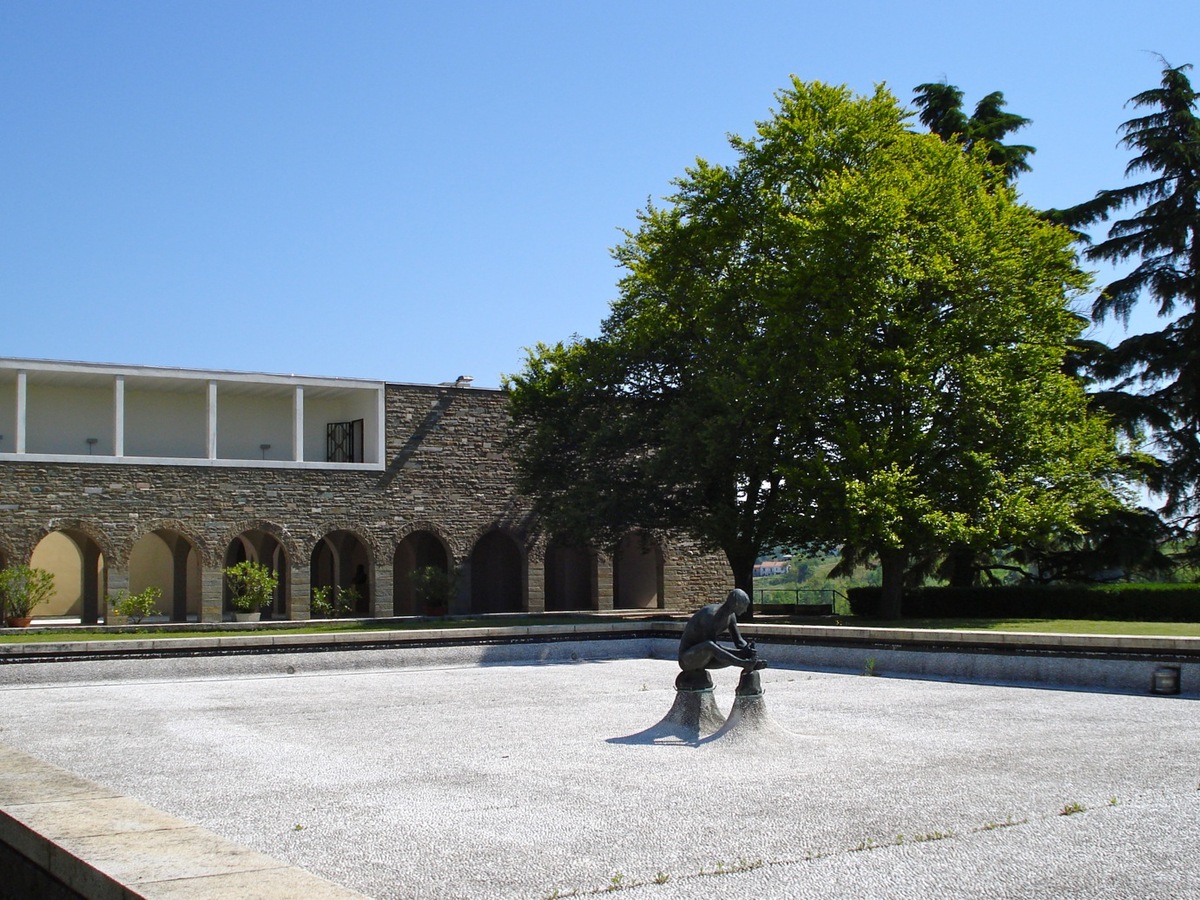
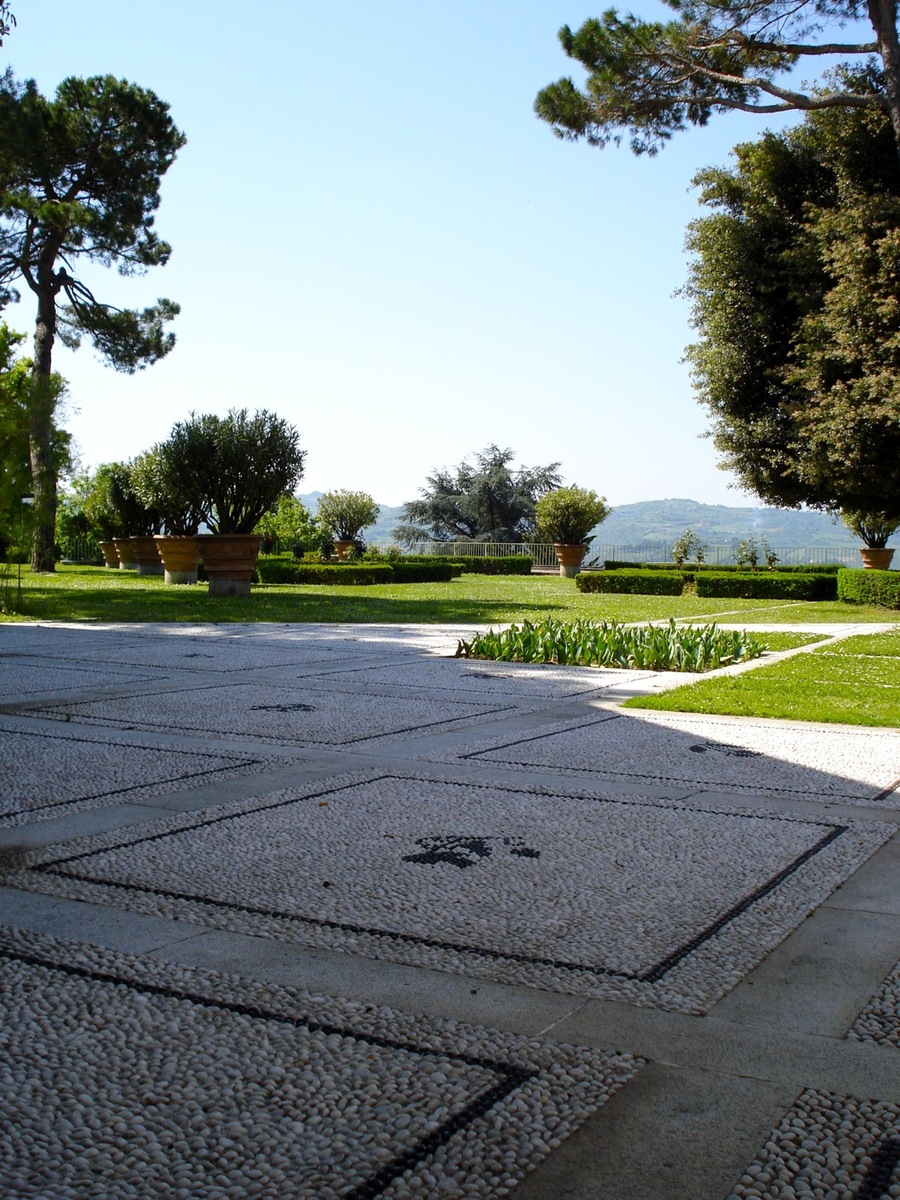
In 1920, the Ottolenghi counts Arturo and Herta von Wedekind zu Horst (a polyhedral artist of German origin) commissioned the architects Federico d’Amato and later Marcello Piacentini, Ernesto Rapisardi, and Giuseppe Vaccaro to create a mausoleum and an architectural complex to house the works of such famous artists as Ferruccio Ferrazzi, Arturo Martini, Fortunato Depero, Libero Andreotti, Rosario Murabito, and others; in 1955, their son Arturo Ottolenghi entrusted Porcinai with the task of designing and creating the garden.
Porcinai’s worked on the garden intermittently from 1955 to 1970. The landscape artist modified the layout of the road giving access to the architectural complex in order to harmonize its insertion into the countryside and introduced a number of garden furnishings; he planted whitethorn hedges and various exemplars of Lagerstroemia indica that in late summer lend a lively chromatic accent to the access road and in autumn explode into warm shadings of red and yellow. All around the architecturally-significant building known as the “Atelier degli artisti,” created to host the various sculptors and architects who stayed at Monterosso, a broad grassy carpet amplifies perception of the space; a path covered over by a pergola supports wisteria, Virginia creeper, and roses leads to the pool, whose almost 50 meters’ length is divided into two sectors: one shallower, adorned with a sculpted fountain, Il Tobiolo by Arturo Martini and featuring many jeux d’eau and the small turtle sculptures conceived by Porcinai, the other, more than 4 meters’ depth. Original granite “easy chairs” designed by the landscape artist embellish the poolside areas. A long ring path links the spreading lawn with the Italian garden; here, Porcinai created a checkerboard structure with small square beds defined by boxwood, separated the ones from the others by stone paving at the same level. The interior of each is planted with roses in different colors and with different habits, while others are left empty; some of the intersections of the checkerboard structure, fashioned of stone slabs, are marked by large terracotta vases that originally held lemon trees. Porcinai also designed the rock garden, in which he integrated a table and several seats with the vegetation; these are surrounded by stone-paved circles of various dimensions and by boulders. The interiors of these “wheels” hold such significant sculptures as Arturo Martini’s Adamo ed Eva. The plantings are of several types and include the species (trees) _Fagus sylvatica atropurpurea, Populus alba, Lagerstroemia indica, Cedrus atlantica, Juglans nigra, Quercus petraea, Quercus ilex, Pinus nigra, Juniperus horizontalis, Pterocarya fraxinifolia , Juniperus sabina, Ulmus campestris, Morus alba, Corylus avellana, Magnolia soulangeana_; (shrubs) _Crategus monogyna, Buxus sempervirens, Arbutus unedo, Evonimus acuta, Osmanthus fragrans, Prunus laurocerasus schipkaensis, Tamarix gallica_, etc.; (flowering species): Paulette. Tzigane, Mitzi, Crimson Glory roses, _Aster dumosus, Berberis, Iberis sempervirens, Veronica armena and V. saxatilis, Geranium sanguineum; (climbers) Wisteria sinensis, Parthenocissus tricuspidata, Hedera helix, Hydrangea petiolaris, Bignonia radicans; (ground covers) Cotoneaster franchetii, Hypericum calycinum_, etc. (2 aerial photos: ©Mark K. Cooper; www.markcooper.it) (Ph.: © Paola Porcinai)


